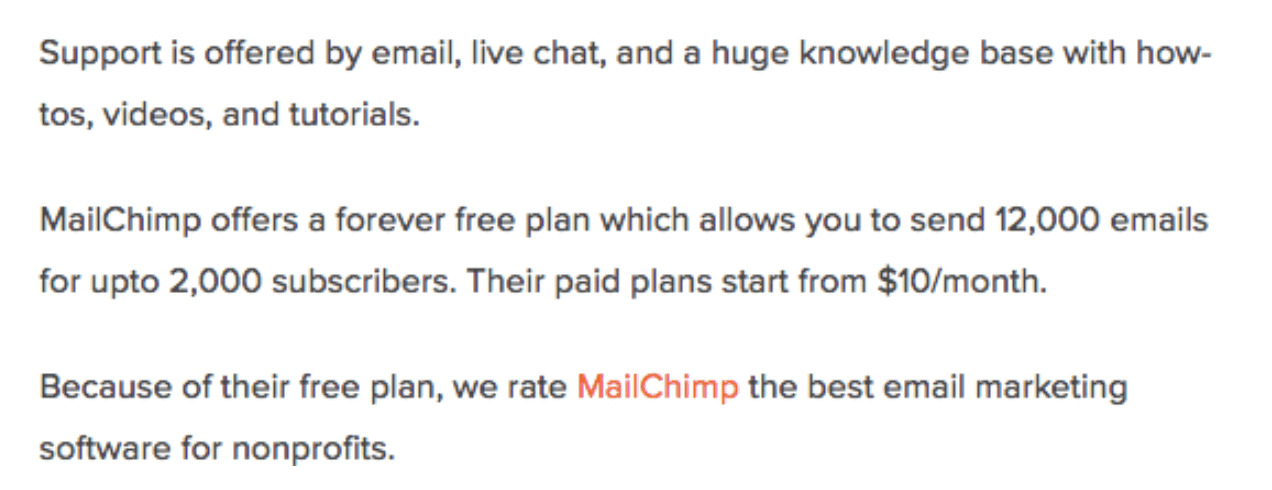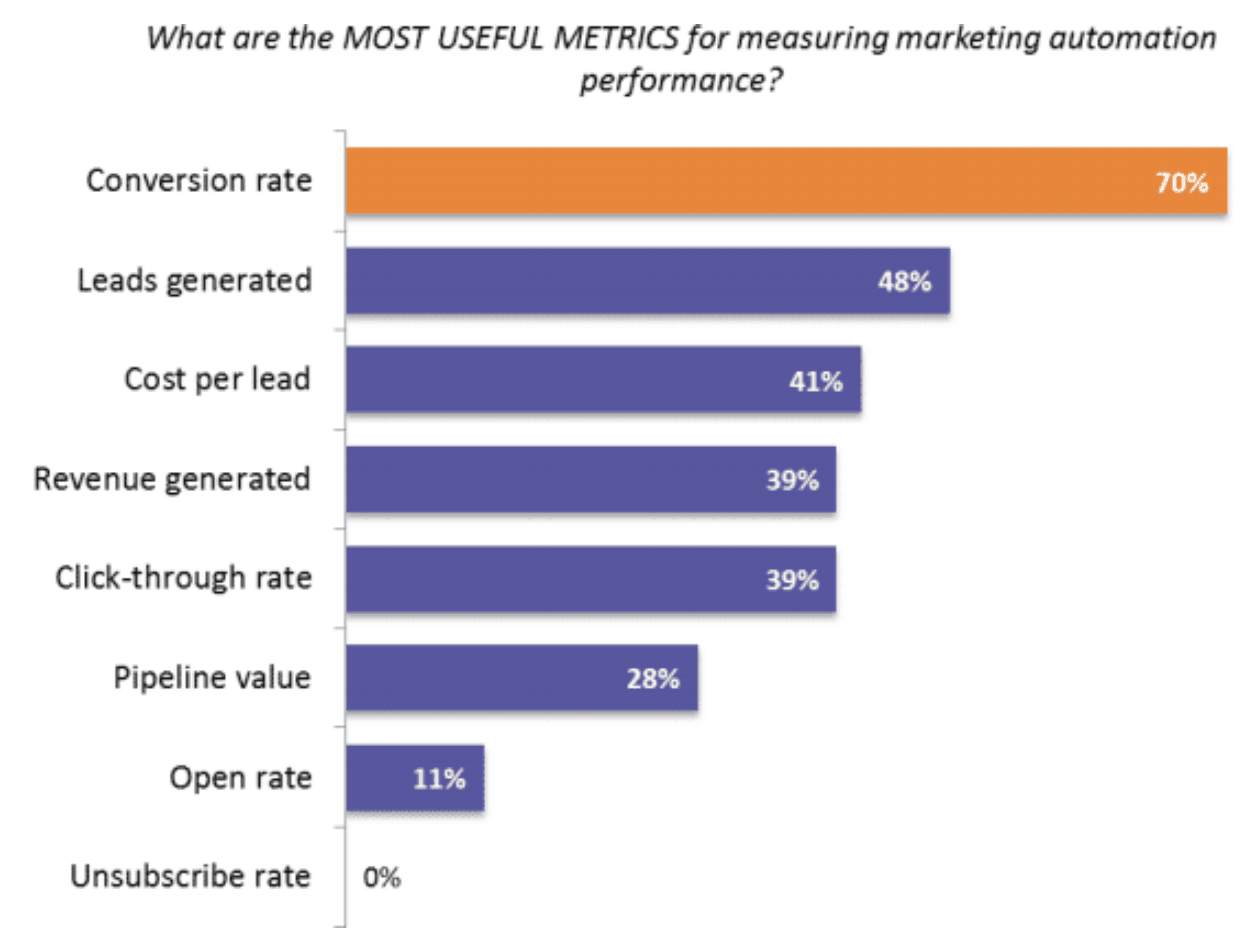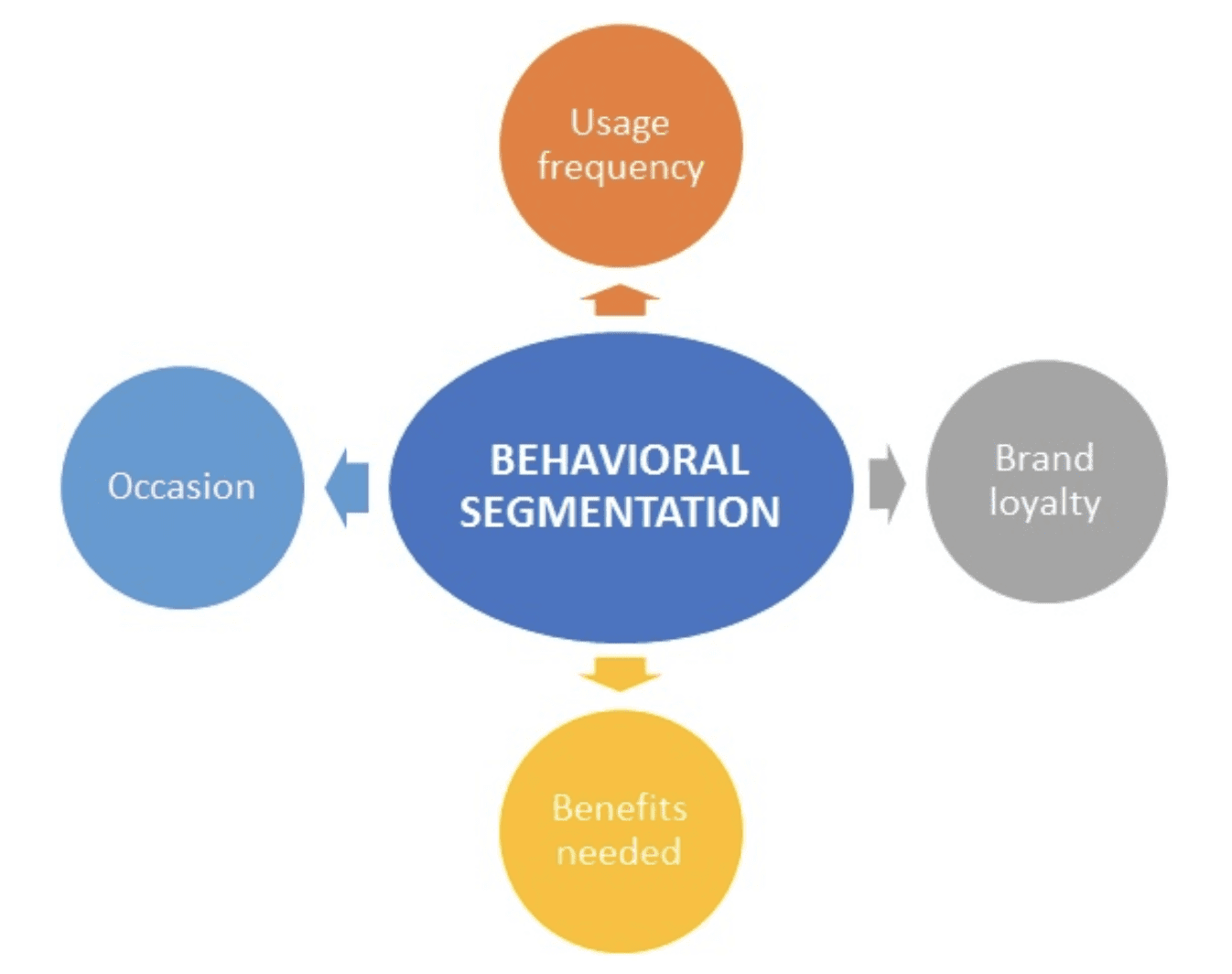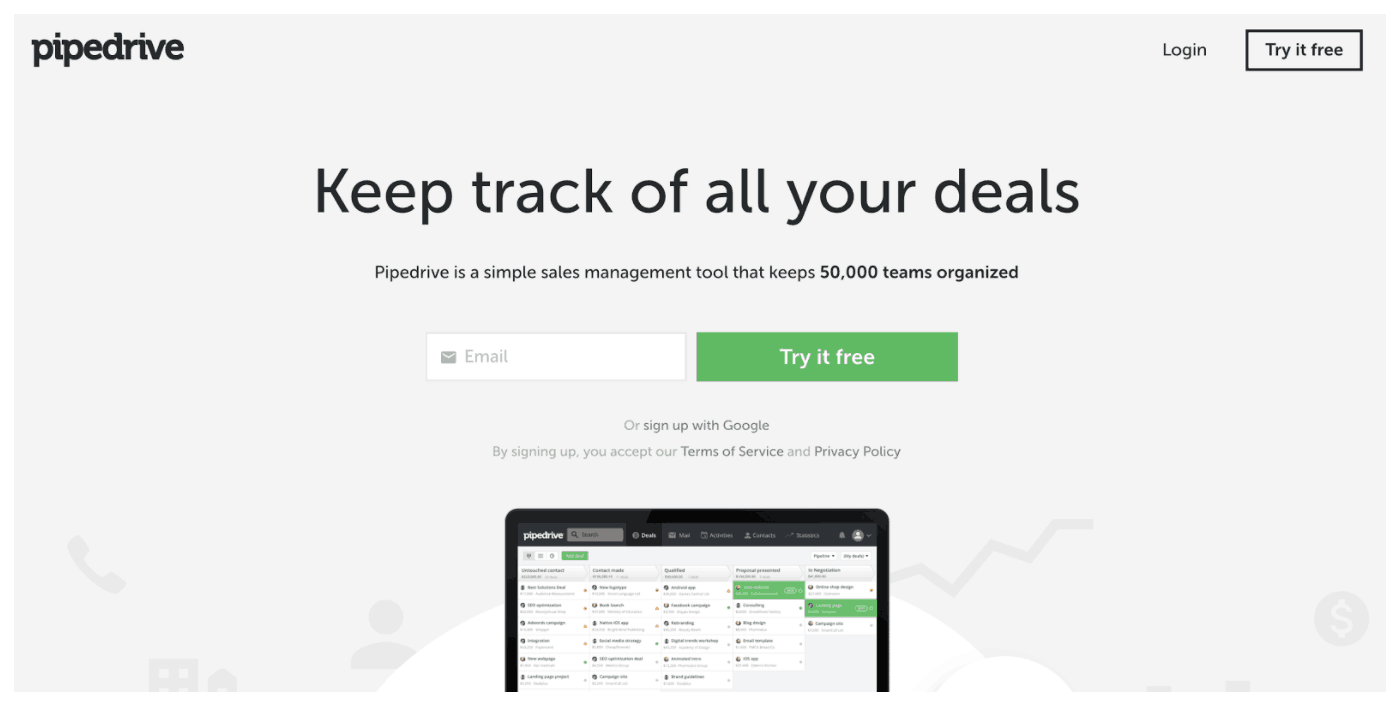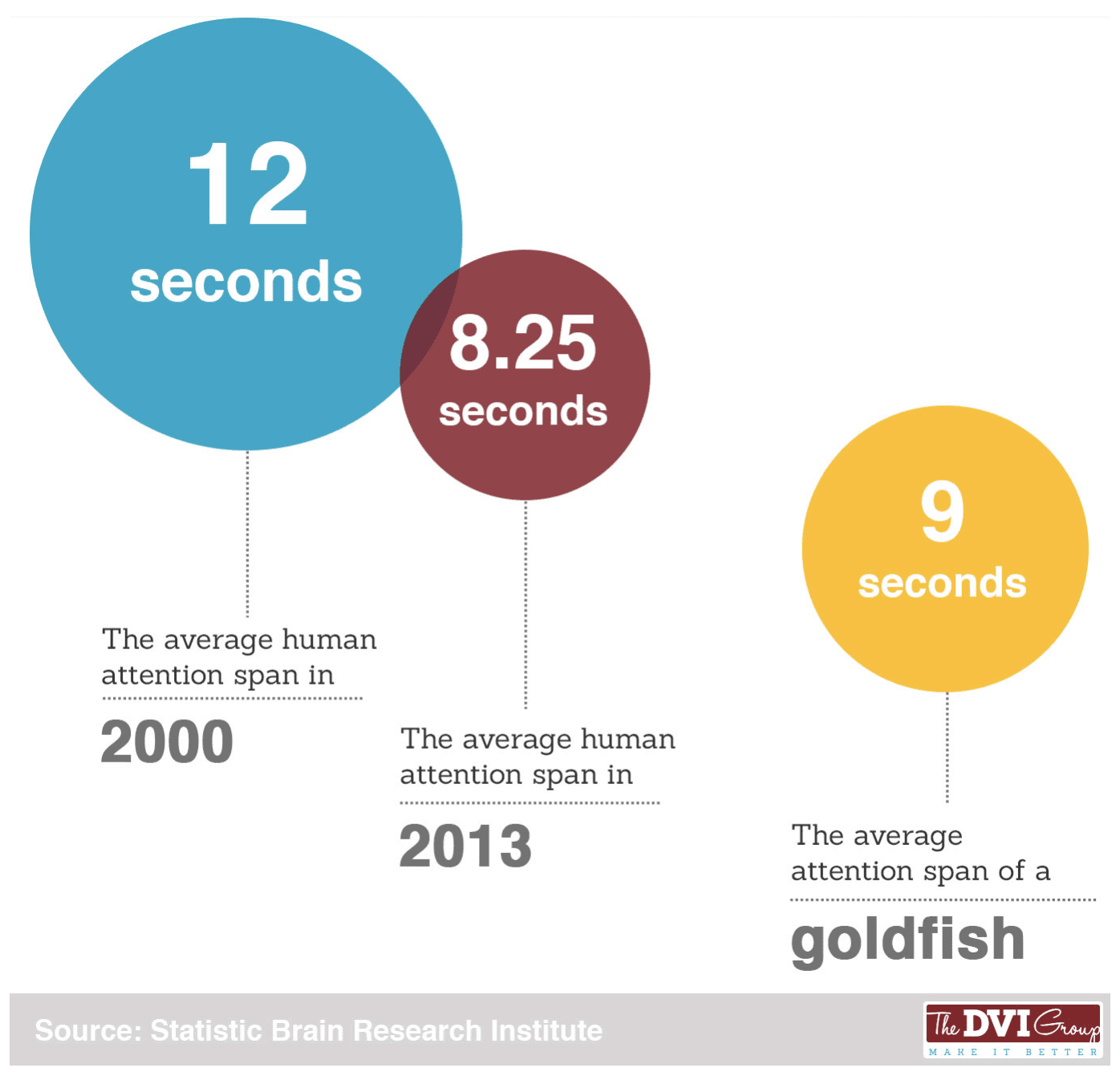Top 5 B2B Marketing Ideas for 2023 (Online Edition)

It’s 2022. It’s not rocket science to realize that some of the best B2B marketing ideas have completely changed from what they were even two years ago. It’s essential to continuously take time to assess what you’re working toward in your current marketing strategy. Is there a better way to get the results you want faster?
Let’s dive into my top five marketing ideas for 2022 to ensure you are the right route to exceed your goals.
1. Rethink Your Call to Action
Changing your CTA to appeal to your target market can skyrocket your conversion rate.
Many B2B marketers unintentionally and unknowingly use a CTA (call to action) that sounds good but doesn’t actually appeal to the concerns and pain that their target market experiences.
Remember, you’re solving a problem. This means your CTA needs to do two simple things: Identify the problem and offer a solution.
However, to increase your CTA’s effectiveness, you need to understand your target market. One of the best ways to better understand your target market is by understanding how your competition is using their CTA to drive leads and sales.
To find out, simply make a list of some of your bigger and more lucrative competitors, and then visit their homepages, looking at the CTAs they use.
Imagine, for instance, that you offer an email marketing service. You might go and compare yourself to MailChimp.

As you can tell, MailChimp uses a playful CTA to market their software. For some of you, that might work. But you might require a more formal voice.
The best way to determine the kind of voice that will work for your business is by determining who your audience is and how you resonate with them. In the end, clarity is far more important than creativity.
So err on the side of writing clear sales copy about what you offer, who it’s for, and what problem it’s going to solve. Similar to what Carrot — a SaaS company that builds websites for real estate investors — does with their homepage.
Another way to measure up what the competition is by doing a search for your competitors and taking note of what their AdWords CTA and corresponding sales copy look like.
See below:

Ask yourself these questions: What pain are they pushing on, and how are they offering to solve that problem for their customer? Will the same message resonate with your customers or not? If so, simply reword the CTA to make it your own.
You can also use third-party directories to identify the selling points of your competitors. After all, a CTA is simply a way to state your unique selling proposition quickly and compellingly.
When I searched for “best email marketing services,” this Google snippet came up.
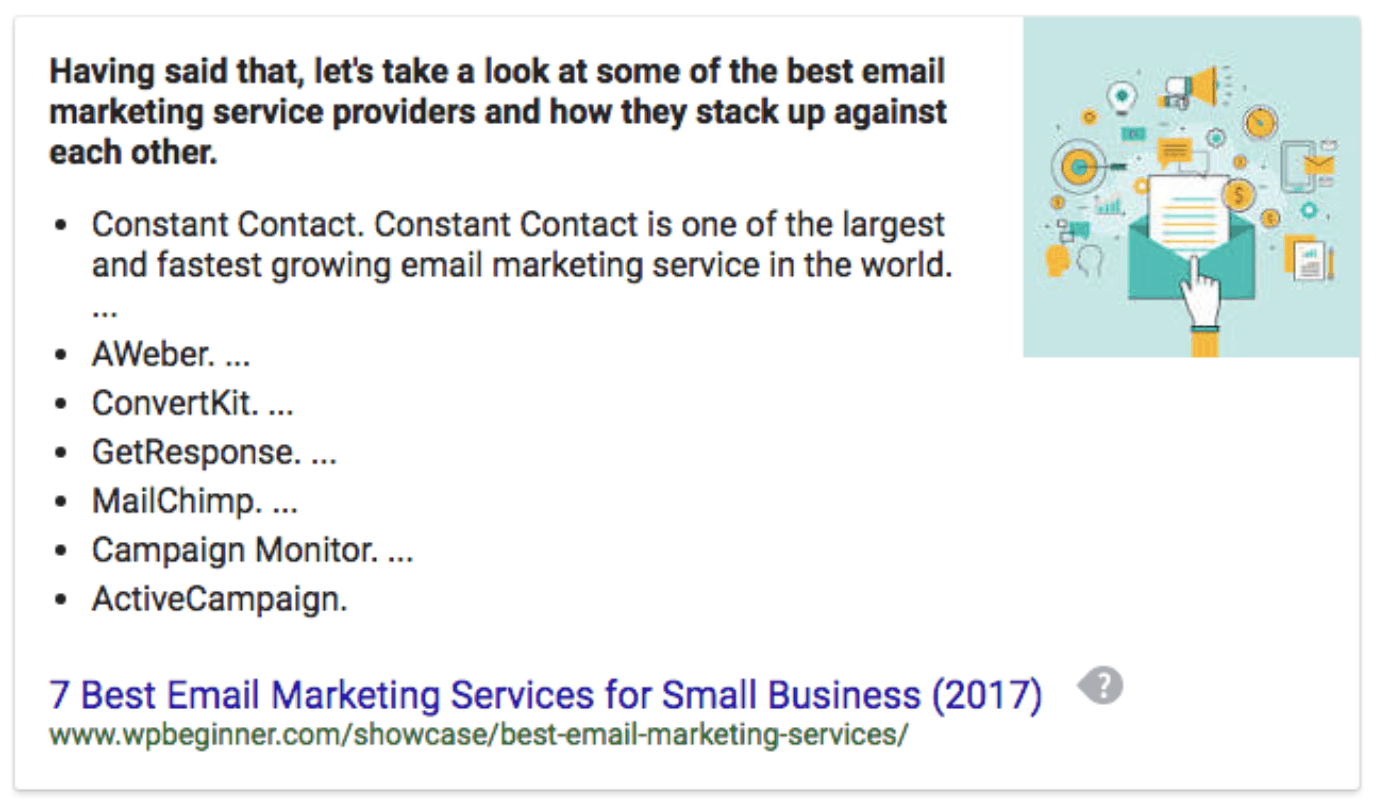
If you browse through this list, you can determine a few critical things. First, you can determine how each email service provider distinguishes itself from the rest. And second, you can look inward to figure out what makes you different from this list of similar companies.
Ask yourself, for instance…
- What makes your service better than the competition? What do you offer that is either (a) cheaper, (b) easier, or (c) more effective?
- How can you leverage that unique selling proposition when writing the sales copy for your CTA?
Here, for instance, is the end of MailChimp’s section from the above result.
In other words, MailChimp’s unique selling proposition is that it’s the perfect software for nonprofits and startups — since it’s inexpensive.
Once you understand your customer base better, you can increase your conversion rate by altering your CTA.
Keep in mind: Going from a 2% conversion rate to a 4% conversion rate is a lot easier than going from 20,000 organic visits a month to 40,000. But they have the same impact on your lead volume.
That’s probably why so many marketers count conversion rate as one of their most useful metrics.
Another way to increase your conversion rate is by making your CTA easier to click. For example, have you ever clicked a webinar CTA only to find out that you had to schedule a future time to watch it instead of watching it right then?
How did that make you feel? Did it discourage you from signing up? If you’re like most people, it did.
We’ve found that providing a convenient CTA significantly increases conversion rates. In one case, going from a “Schedule a Demo” CTA to a convenient “Watch a Demo Video” increased conversion rates by 500%.
GPSTrackit discovered something similar when they changed from this…

To this…
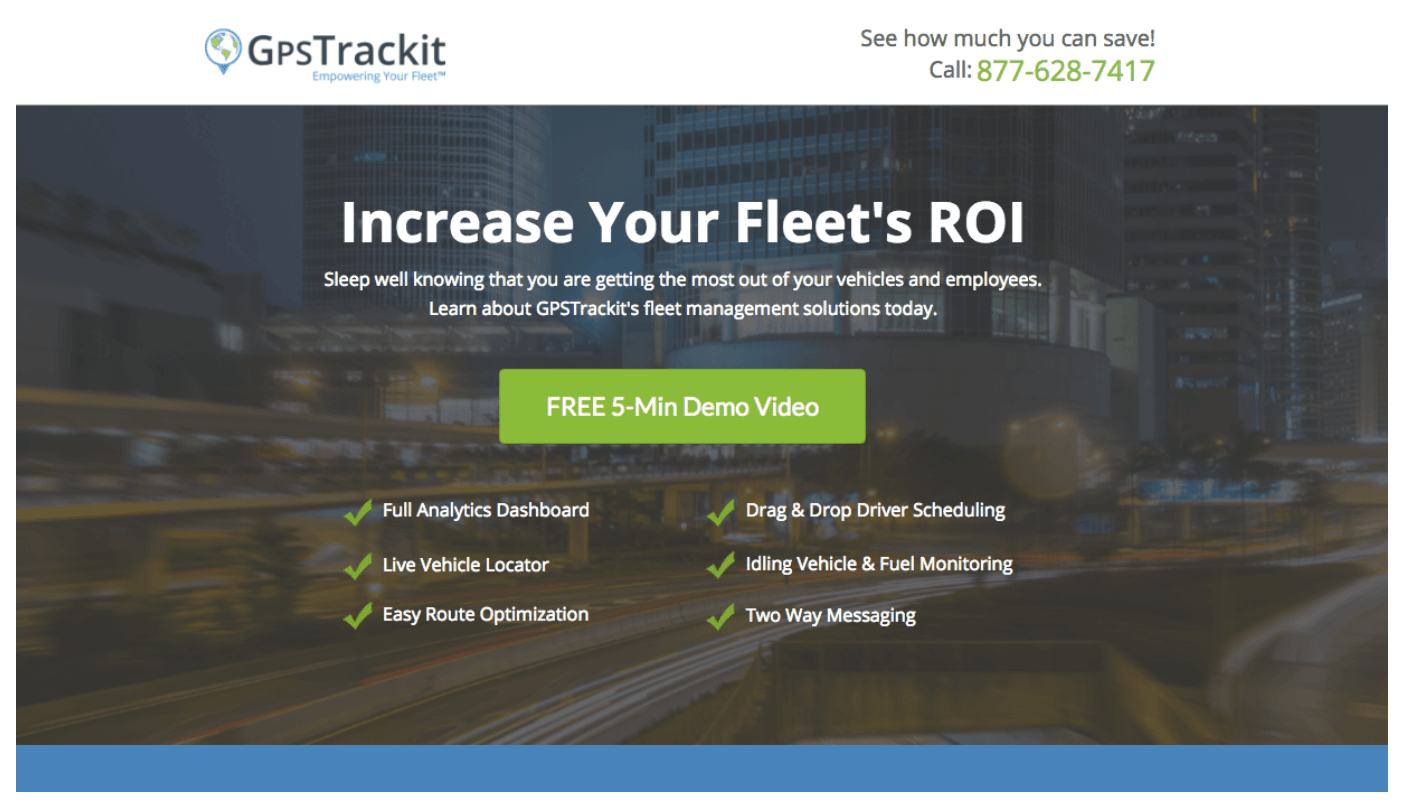
And the conversion rate went from a measly 1.71% to a whopping 15.33%.

In other words, how you say what you have to say matters.
One final way to test and iterate your CTA is by looking at the lead magnet you’re using. If the lead magnet isn’t compelling, then your conversion rate will suffer.
A fresh CTA might mean offering your prospects a new resource. Sure, it’s a whole lot easier to offer a resource that you’ve already made than it is to create an entirely new one. That’s why many companies don’t want to change their CTA.
But think of it as an investment. What is the lifetime value of a new client? If developing a new resource brings in just a few new clients, it won’t be difficult to achieve a high return on your investment.
Try something new. Go to your competitors’ websites and see what they offer as a lead magnet. If it’s working for them and they have a similar audience, it will work for you. Change the title and put your own spin on the resource.
One thing’s for sure, though. Your ideal client will click a CTA that appeals to them specifically more than they will click a generic one.
If you create a CTA and lead magnet that people actually click, you won’t just watch your conversion rate skyrocket, you’ll watch your revenue surge as well.
2. Understand Your Audience
If you don’t know who your audience is, you can’t market to them very well.
You know the importance of building out your customer avatar and ensuring that the pain you push on and the solution you offer are in a language that your ideal client understands.
Here’s the reality, though. It’s all good and well to say that you want to cater to your ideal client. But every single one of your clients is a bit different.
Sure, you have a target audience and they all have similar problems and require a similar solution. However, each one is going to be at a different place in the buying journey. That means you can’t just understand your ideal clients as a whole; you need to understand them individually as well.
How? Leverage behavioral segmentation.
Basically, this marketing and remarketing to visitors and clients based on their interactions with your website, emails, and other outlets.
With behavioral marketing, rather than marketing to a large group of people who are all different, you understand where someone is at in the buying journey, based on their behavior. Pretty straightforward!
Which blog posts they read, which resources they download, which emails they open, and how much time they spend on each page tells you what interests them.
You can then use analytics to create segmented audiences and run ad campaigns that specifically cater to what each person is currently interested in.
For example…
- You might send a free downloadable resource to new visitors.
- You might use a sign-up-for-this-demo CTA for returning visitors.
- You might use an upsell (such as “upgrade your plan” or “try out our newest feature” for existing customers.
Maybe a visitor isn’t ready to buy yet, but they are ready for the next piece of content you have to offer. Or maybe they are ready to buy, and you simply need to ask.
The point is, you can’t know your audience and market to them individually if you don’t run analytics to understand them. Your customers are different, and the way you market to them should be too.
3. Leverage Third-Party Directories
In the old days of search engines, it was entirely possible for B2B companies to rank under a plural search.
When many of your potential clients go searching for something to help their business, they aren’t searching directly for you. They are searching with a plural phrase that will give them a listicle of their best options.
Depending on whether or not you take advantage of those articles, you could be on that list.
For instance, when I searched for “best contract management software” in Google, Capterra — a third-party review site — came up as the #1 result. Oh, and the three results following, all third-party review sites as well.

When I clicked on the link, I saw plenty of options, each with a description, star rating, logo, and link to visit the website.
Now you might think getting onto these kinds of articles is simply a matter of having a massive brand name for publishers, editors, and PR personnel to notice.
But that’s where you’re wrong.
More often than not, getting onto these lists is a matter of putting money in the right pockets. Sure, for some people, if your name is big enough, writers will include you without thinking twice.
But for most of you, if you want to play, you have to pay.

It might seem like a bad thing to you that these directories have taken over plural Google searches, but it’s actually not. With this arrangement, everyone wins.
It’s an obvious win for the directories. It was never meant for directories to be a free way for you to get your brand in front of the world. They make money from the service they offer.
This is good for Google, too. When someone enters a plural search on Google, they don’t have to click back and forth between multiple sites. Google can now give them everything they’re looking for in one place.
In the end, it’s actually a win for you. If you’re willing to spill some cash, these directories offer an opportunity for you to get to the top of Google results without much effort. That’s huge for your traffic and conversion rate.
And, since almost none of your prospects know that these directory websites live and breathe on a pay-to-play model, your business’s mention will be well-trusted by people who stumble across it.
Discover Your Search Engine Opportunities
We would love to take a look at your current search engine positioning and analyze the growth potential within your industry!
4. Use Dedicated Landing Pages
Many B2B marketers make a vital mistake when they advertise their product or service.
It all starts with a compelling advertisement.
The advertising drives traffic and clicks to your website better than any other campaign you’ve run. But, as you well know, all of that traffic is worth nothing if visitors don’t convert.
As you glance at the analytics, they confirm your worst nightmare. While the campaign is driving lots of traffic, no one is filling out a form or purchasing your products. More than likely, the problem lies in where you’re sending them. If, for instance, you advertise email marketing automation and then send them to your homepage which discusses email marketing as a whole, the person might just bounce off your website right there.
The reality is that the person who clicks on your advertisement wants to see exactly what your advertisement discusses. The best way to solve this discrepancy is by sending leads to a landing page designed specifically for the ad they clicked on.
Consider this. If I search for “CRM software for small business,” these results pop up and I click on the two I’ve highlighted.
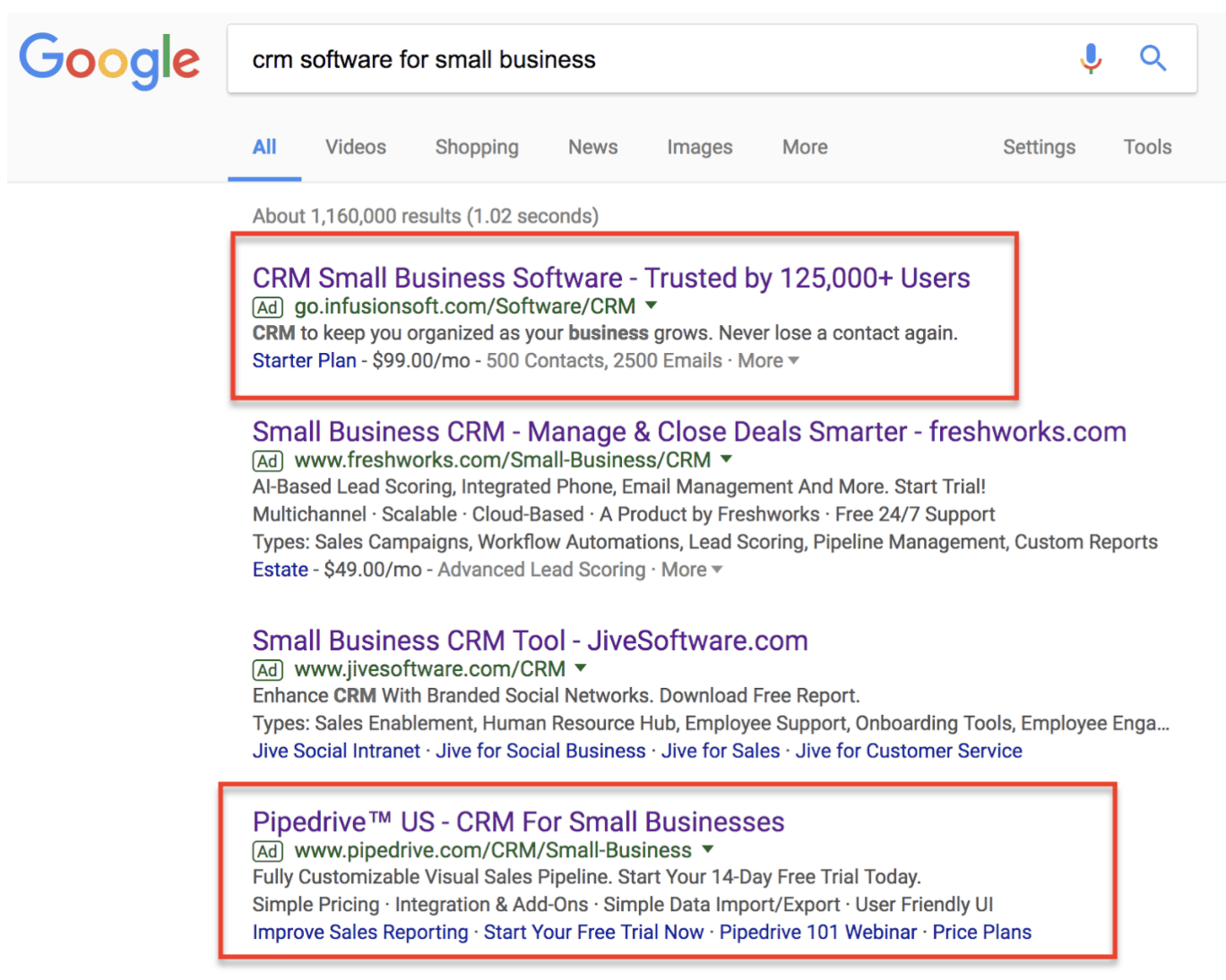
The Infusionsoft results takes me to a landing page made directly for small business owners.
The Pipedrive result, however, takes me to a landing page so similar to its homepage that I didn’t even notice the difference at first. Plus, they don’t mention anything about small businesses on the landing page.
For your reference, here’s their homepage.
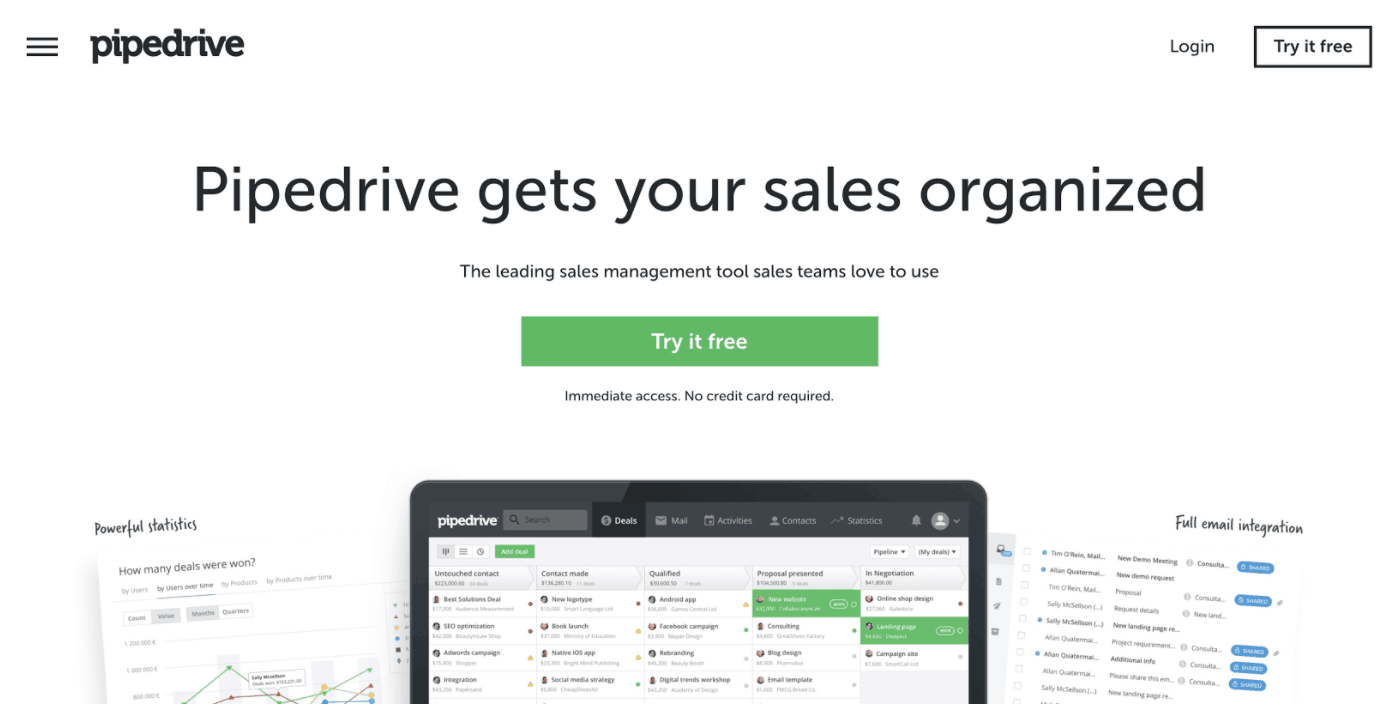
Infusionsoft’s PPC advertisement corresponds directly with their landing page. Pipedrive’s landing page, on the other hand, feels like a sad afterthought.
Why is this method of joining each advertisement with a relevant landing page so vital? Well, one study claims that humans have attention spans that are shorter than goldfish.
When people land on a page that doesn’t discuss what they thought it was going to, they won’t try and navigate your website to find the correct page. They’re just going to leave.
A dedicated landing page gives a prospect what they want the moment they get to your site. This is why 68% of B2B businesses use landing pages to generate sales and leads and why with more landing pages comes more leads.
To create your own landing pages, consider one of our technology partners, Unbounce. They make it easy to create landing pages designed to convert visitors.

5. A/B Test Everything
As a marketer, nothing is quite as important as testing. And not just testing one tactic one month and then something else the next, but testing two different strategies at the same time.
After all, you’re familiar with how much the market can change from month to month. Testing two ad campaigns by running one in October and the other in December won’t yield accurate results. The change in season will skew your data.
And seasons are only one of the countless factors that change. If you don’t run your tests side-by-side and at the same time, you can’t trust your findings.
That’s why A/B testing is powerful!
It allows you to test two different factors at the same time and see which one performs better.
We’ve seen landing pages go from a 3% conversion rate to a 26% conversion rate through A/B testing.
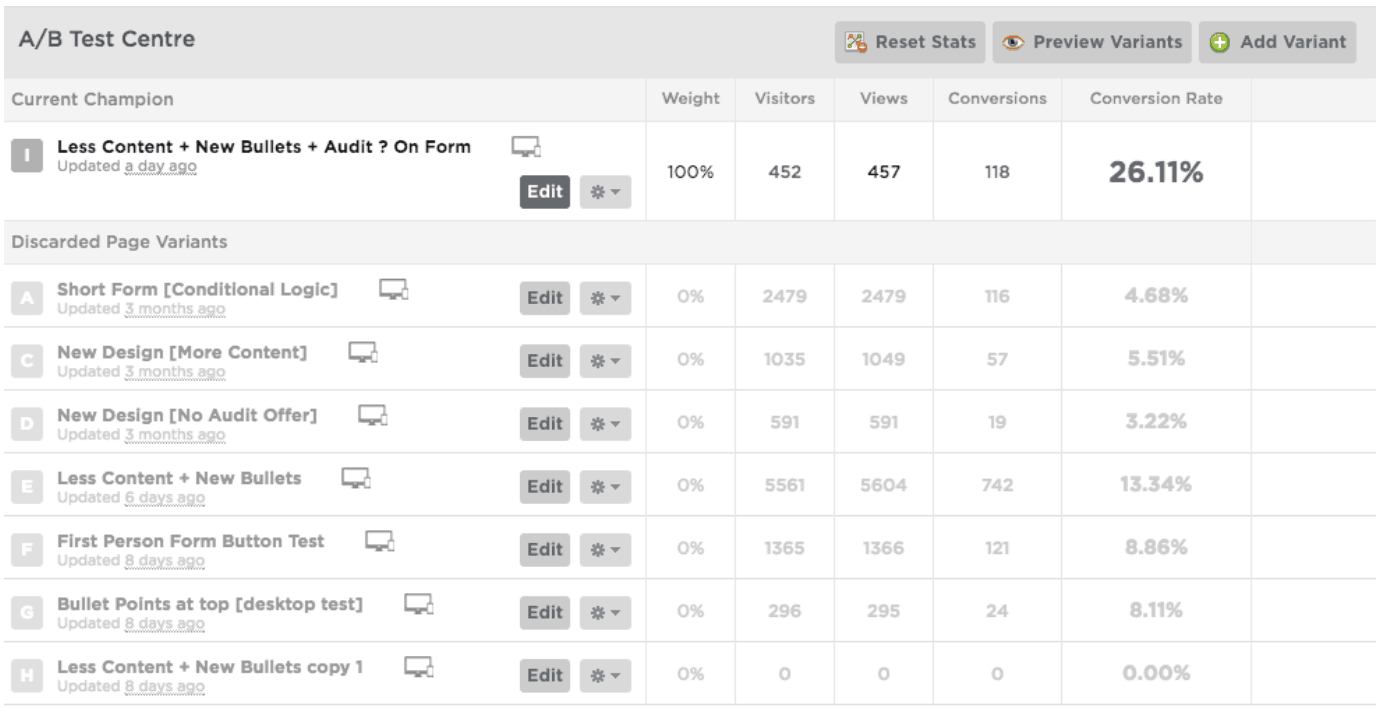
A/B testing is a great way to know if something will work for you in the long run. Even though all of your competition is similar, each business is different, and different tricks will work for different companies.
In particular, you can A/B test things like…
- Salesy copy
- CTA placement
- CTA color
- Page design
- Advertisements with different nuances (wording, image, title, description, offer, etc…)
One of the biggest challenges to A/B testing though is having enough resources on hand to test. For example, you may want to compare the effectiveness of a demo video as a CTA with a CTA that asks a prospect to schedule a live call. However, before you can run the A/B test, you have to prepare a demo video.
The hurdle of creating the video may tempt you to ditch the test entirely. But don’t be so quick to throw out the idea. Like I said earlier, we’ve seen a CTA involving a demo video increase a client’s conversion rate by five times.
So, don’t be afraid to invest in resources when you run your A/B tests. The only way to actually find out what works for your business is by simultaneously testing factors that have an impact on your conversion rate.
The more you test, the better your strategy will be, and the better you’ll understand your target market.
Conclusion
B2B marketing ideas are endless.
Each year brings new ways to market your product or service to your ideal client. And while all of those new tactics can be tempting, the best thing you can do is stick with the tactics you know work.
That’s not to say that trying a new strategy every now and then is a bad idea. Sometimes, you’ll discover something beneficial within that exploration.
But the tried-and-true marketing tactics are the safe place you can return to whenever those experiments don’t work. Those tactics involve crafting a new call-to-action, understanding and segmenting your audience, leveraging third-party directories, using dedicated landing pages, and testing like crazy.
Now, all of that marketing advice seems a whole lot simpler, huh?
Learn every factor involved in effective B2B marketing.




